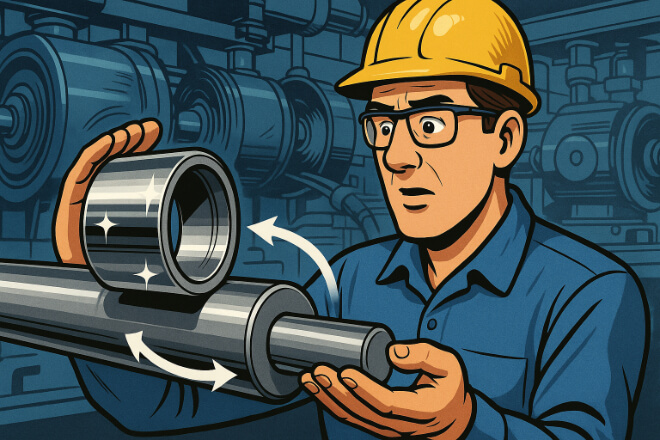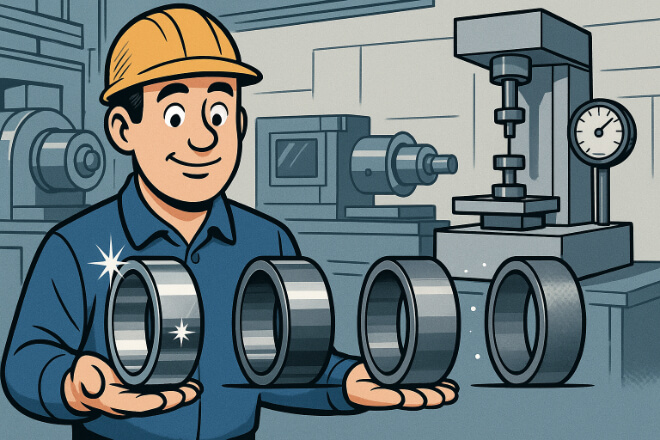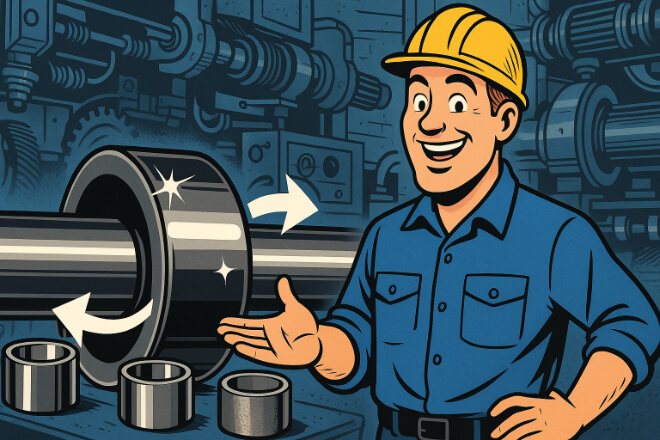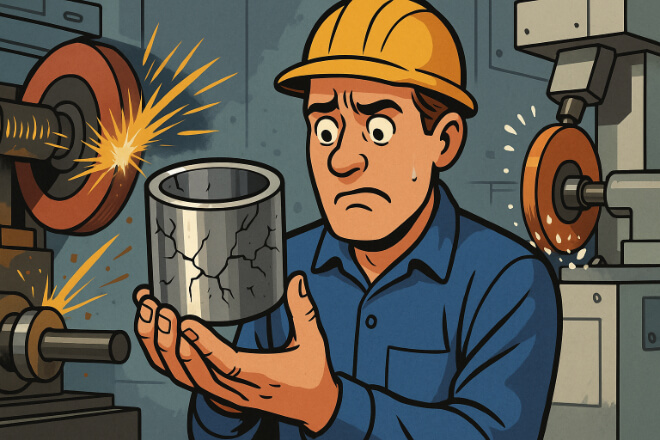The surface finish of tungsten carbide bushings plays a crucial role in their performance, longevity, and efficiency in various applications.
Achieving the optimal surface finish can reduce wear, lower friction, and improve the overall functioning of the machinery.
In this blog, we will explore the importance of surface finish for tungsten carbide bushings, factors that influence it, and how to achieve the best finish for specific industrial needs.
What is Surface Finish and Why is it Important for Tungsten Carbide Bushings?

Surface finish refers to the texture of a surface that has been machined or treated.
For tungsten carbide bushings, it is the final quality of the surface that interacts with other components like shafts.
A well-achieved surface finish minimizes friction, wear, and damage, leading to improved efficiency and longer service life.
Friction Reduction: A smoother surface finish leads to reduced friction, which is particularly important in high-speed or high-load applications.
Enhanced Durability: Proper surface finishing can help to prevent premature wear by ensuring that the bushing maintains its shape and performance over time.
Efficiency: A well-finished surface ensures smooth interaction between the bushing and other components, contributing to the overall efficiency of the system.
Factors Affecting Surface Finish in Tungsten Carbide Bushings

Achieving an optimal surface finish is not a one-size-fits-all approach. Several factors can influence the surface finish of tungsten carbide bushings, including:
Machining Process:
The type of machining used, such as grinding, polishing, or lapping, directly affects the surface texture.
Grinding is common for achieving a smoother finish, while polishing and lapping can further refine the surface.
Cutting Tool Quality:
The quality of the cutting tools used in manufacturing also plays a significant role in determining the final finish.
High-quality tools typically result in better surface finishes with fewer imperfections.
Processing Parameters:
Speed, feed rate, and coolant types used during machining can impact the surface roughness of the bushing.
Slower speeds and appropriate coolant help achieve finer finishes.
Material Properties:
碳化钨 硬度 makes it a challenging material to machine, and achieving a fine finish requires the correct parameters to avoid surface cracks or defects.
Surface Finish Grades for Tungsten Carbide Bushings

There are different surface finish grades based on the roughness (Ra) value, which indicates the height of surface irregularities.
Here are the commonly used surface finish grades for tungsten carbide bushings:
Ra < 0.05 µm (Mirror Finish): This is an ultra-smooth surface finish, ideal for applications where minimum friction and wear are critical, such as in precision machinery and high-speed pumps.
Ra 0.05 – 0.1 µm (Polished Finish): This finish is used for applications where moderate friction is acceptable, such as in automotive parts and lower-speed industrial machinery.
Ra 0.1 – 0.4 µm (Fine Finish): This finish provides good 耐磨性 and is used in general-purpose applications with moderate demands for wear and friction resistance.
Surface Finish Grades for Tungsten Carbide Bushings
| Surface Finish Grade | Ra Value (µm) | 应用 |
|---|---|---|
| Mirror Finish | Ra < 0.05 | Precision machinery, high-speed pumps |
| Polished Finish | Ra 0.05 – 0.1 | Automotive parts, general machinery |
| Fine Finish | Ra 0.1 – 0.4 | General-purpose applications, moderate wear resistance |
Methods for Achieving Optimal Surface Finish

There are several methods used to achieve the desired surface finish for tungsten carbide bushings:
Grinding: Grinding is one of the most commonly used methods to achieve a smooth surface. It involves using abrasive wheels to remove material and create a fine finish.
Polishing: Polishing is typically done after grinding to remove any remaining surface irregularities. It produces a very smooth and shiny surface.
Lapping: Lapping involves rubbing the bushing against a flat surface with a fine abrasive to achieve an ultra-smooth finish. This process is commonly used when a mirror finish is required.
Electro-polishing: Electro-polishing uses an electrochemical process to remove surface imperfections and achieve a smooth, shiny finish. This method is often used for high-precision parts.
Benefits of Achieving the Optimal Surface Finish for Tungsten Carbide Bushings

The correct surface finish can provide numerous advantages for tungsten carbide bushings:
减少摩擦:
Smoother surfaces lead to less friction between the bushing and shaft, which reduces energy consumption and increases the efficiency of the machinery.
Increased Durability:
Proper surface finishing reduces the risk of wear and tear, helping tungsten carbide bushings last longer in demanding environments.
Improved Performance:
Achieving the optimal surface finish ensures that the bushing works efficiently, even in extreme conditions, by improving heat dissipation and reducing friction.
耐腐蚀:
A smooth finish can also improve corrosion resistance, particularly in harsh chemical or high-temperature environments, where rough surfaces can lead to localized corrosion.
Challenges in Achieving the Optimal Surface Finish for Tungsten Carbide Bushings

While achieving the best surface finish is important, there are challenges associated with it:
材料 硬度: Tungsten carbide is a very hard material, making it difficult to machine to a fine finish. Special care and appropriate tools are required to avoid cracks and fractures.
Cost: Achieving ultra-fine finishes such as mirror polish can be expensive, requiring advanced equipment and time.
Time-Consuming Process: Fine surface finishes often take longer to achieve, which may result in increased production times and costs.
结论
The optimal surface finish for tungsten carbide bushings is vital for ensuring the longevity, performance, and efficiency of industrial machinery.
By understanding the types of surface finishes, methods to achieve them, and the challenges involved, manufacturers can ensure their bushings perform at their best in various applications.
Proper surface finishing helps reduce friction, minimize wear, and extend the life of both the bushing and the shaft, ultimately leading to more efficient and cost-effective operations.
如果您想了解任何公司的更多详细信息,请随时 联系我们。
